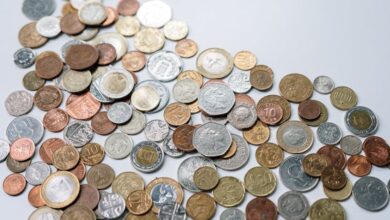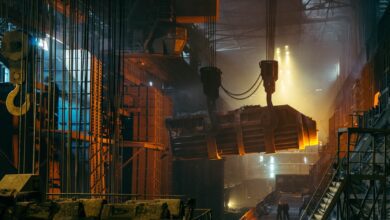Metals in Motion: Analyzing Silver, Copper, and Rare Earths in Today’s Economy and Investment Landscape

In an increasingly interconnected world, the dynamics of metal markets serve as crucial indicators of economic health and technological advancement. This article delves into the multifaceted roles of various metals, focusing on silver’s dual function as both an industrial cornerstone and a favored investment asset. We will explore how copper prices reflect broader global economic trends, revealing insights into market stability and growth. Additionally, the rise of green energy technologies has sparked a surge in demand for rare earth metals, reshaping the landscape of resource consumption.
As we navigate through the complexities of the metals market, we will also compare platinum and palladium as investment options, assess the significance of metals in diversifying investment portfolios, and discuss the impacts of inflation on the prices of precious and industrial metals. Furthermore, we will examine aluminum's role in a sustainable economy and the influence of mining regulations on metal prices. Through this comprehensive analysis, we aim to provide a clearer understanding of how these essential materials interact with economic and technological shifts, helping investors and industry stakeholders make informed decisions.
- 1. The Dual Function of Silver: Bridging Industry and Investment
- 2. Copper Indicators: Decoding Global Economic Trends through Price Movements
- 3. Green Energy Revolution: How Renewable Technologies Drive Demand for Rare Earth Metals
1. The Dual Function of Silver: Bridging Industry and Investment
Silver holds a unique position in the commodities market due to its dual function as both an industrial metal and a valuable investment asset. On one hand, silver is a critical component in various industrial applications, including electronics, solar panels, and medical devices. Its excellent electrical conductivity and antibacterial properties make it indispensable in the manufacturing of high-tech gadgets and renewable energy technologies. As industries increasingly adopt green technologies, the demand for silver is expected to rise, further solidifying its role in the industrial sector.
On the other hand, silver serves as a popular investment vehicle, often viewed as a hedge against inflation and economic uncertainty. Investors typically turn to silver during times of financial instability, as it tends to retain value and can offer protection against currency devaluation. The metal's historical significance as a store of value, along with its relatively lower price compared to gold, makes it an attractive option for both new and seasoned investors.
The interplay between silver’s industrial demand and its investment appeal creates a dynamic market. For instance, fluctuations in industrial demand due to technological advancements can influence silver prices, which in turn affects its attractiveness as an investment. As global economies transition towards more sustainable practices, the demand for silver in industrial applications is likely to increase, potentially driving up prices and making it a more appealing investment. Thus, silver not only bridges the gap between industry and investment but also reflects broader economic trends and shifts in consumer behavior.
2. Copper Indicators: Decoding Global Economic Trends through Price Movements
Copper, often referred to as "Dr. Copper" due to its ability to forecast economic health, serves as a crucial indicator of global economic trends. As one of the most widely used industrial metals, its price movements can provide valuable insights into the state of the economy. When demand for copper rises, it typically signals increased industrial activity and infrastructure development, suggesting economic expansion. Conversely, falling copper prices may indicate a slowdown in manufacturing or construction, reflecting broader economic challenges.
Several factors influence copper prices, including supply constraints, geopolitical tensions, and global demand shifts, particularly from major consumers like China. For instance, if China, the world's largest copper importer, increases its manufacturing output or embarks on extensive infrastructure projects, copper prices often rise in response to heightened demand. On the other hand, economic slowdowns, such as those caused by trade disputes or recessions, can lead to reduced demand and falling prices.
Additionally, copper prices are sensitive to macroeconomic indicators such as GDP growth rates, employment data, and manufacturing indexes. Investors and analysts closely monitor these indicators, as they can provide predictive signals about future copper demand and, by extension, the overall health of the global economy. In this way, copper not only serves as a barometer for industrial activity but also reflects investor sentiment and market expectations regarding economic growth.
The recent push towards sustainable technologies, including electric vehicles and renewable energy systems, has further underscored copper's significance. As these sectors expand, the demand for copper is expected to increase, driven by its essential role in electrical wiring and components. Therefore, fluctuations in copper prices can be interpreted as a reflection of both current economic conditions and future growth potential, making it an invaluable tool for understanding global economic trends.
3. Green Energy Revolution: How Renewable Technologies Drive Demand for Rare Earth Metals
The shift toward renewable energy technologies is reshaping global markets, with a significant impact on the demand for rare earth metals. As nations strive to reduce carbon emissions and transition to sustainable energy sources, the reliance on rare earth elements (REEs) has intensified. These metals, including neodymium, dysprosium, and terbium, are essential components in the production of high-performance magnets used in wind turbines, electric vehicles (EVs), and various clean energy technologies.
The proliferation of electric vehicles is particularly noteworthy, as they require substantial amounts of rare earth metals for their batteries and motors. With global EV sales projected to increase dramatically in the coming years, the demand for these metals is expected to soar. Additionally, renewable energy systems, such as solar panels and wind power installations, also necessitate rare earth materials, further driving demand.
However, the supply chain for rare earth metals presents challenges. A significant portion of global production is concentrated in a few countries, notably China, which has historically dominated the market. This concentration raises concerns about supply security and geopolitical risks, prompting other nations to explore domestic sources and recycling options.
As the green energy revolution continues to gain momentum, the demand for rare earth metals is anticipated to grow, creating both opportunities and challenges for investors and industries alike. The careful management of resources, sustainable mining practices, and the exploration of alternative materials will be crucial in meeting this rising demand while minimizing environmental impacts. In summary, the transition to renewable technologies not only underscores the critical role of rare earth metals in the global economy but also highlights the importance of strategic planning for their sustainable utilization.
In conclusion, the multifaceted roles of metals, particularly silver, copper, and rare earth elements, underscore their significance in both industrial applications and investment landscapes. As industries increasingly pivot towards sustainable practices, the demand for metals will likely intensify, influenced by technological advancements and regulatory changes. The contrasting investment profiles of platinum and palladium further illustrate the complexities of metal markets, where strategic diversification can serve as a hedge against inflation and economic fluctuations.
Looking ahead, the future of aluminum and its contributions to a sustainable economy are promising, but will depend on evolving mining regulations and environmental considerations. Understanding these dynamics is essential for investors seeking to navigate the intricate web of metal markets while capitalizing on their potential for growth. As we move into a more interconnected and green-focused economy, the role of metals will remain pivotal in shaping both industrial innovation and investment strategies.





